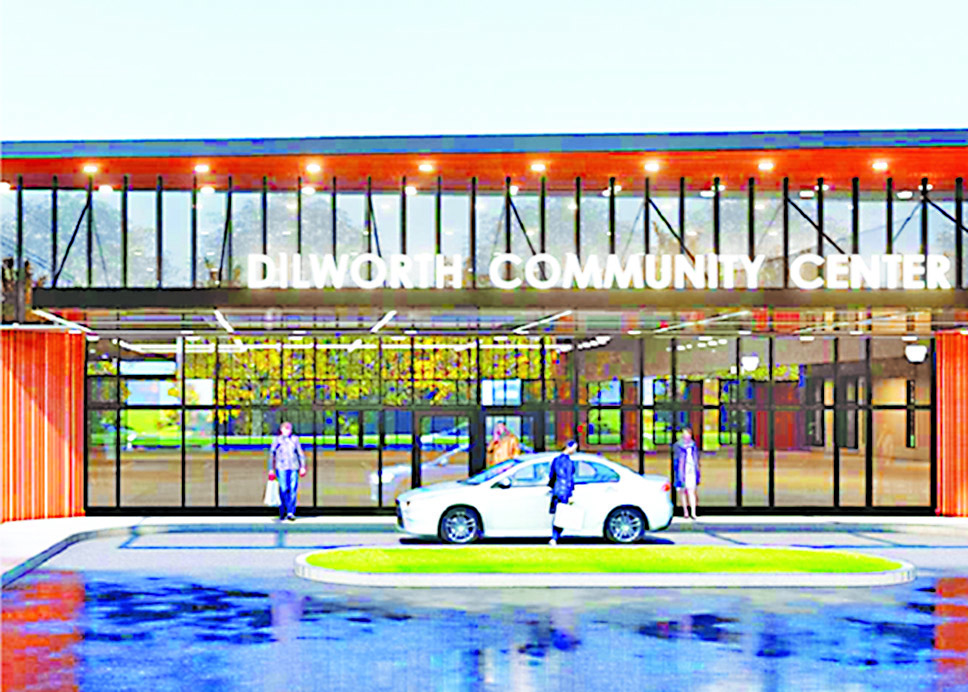Nancy Edmonds Hanson
Mayor Chad Olson has sentimental memories of the Dilworth Community Center, where he and his bride danced together for the first time after their wedding nearly 20 years ago. But though it holds a special place in the hearts of the city’s mayor and his neighbors, he says, “It has been a mainstay of the city since 1983, but the time to replace it has come.
“Dilworth has nearly doubled in size since the Community Center was built,” he notes. “We’ve been thinking about replacing it since we knew the new fire station would be a go. We want to do something new – build some new memories for the coming generation”
In the meantime, residents will have a chance to bid farewell to the local landmark on April 6. Plans include a pancake breakfast, corn-hole tournament, interactive graffiti wall and implanting a time capsule.
Construction of the fire hall will begin shortly after the big goodbye, while attention turns to the bigger questions that lie ahead: What do Dilworth residents want to see in the new community facility? And will they approve the half-cent city sales tax coming up on Nov. 5 to fund it?
The 41-year-old community center now shares the building that also houses the city’s fire hall. It will be demolished to clear the way for a new, modern fire station. That $10 million project got the green light in 2023 when the Minnesota Legislature approved its bonding. The fire department will move into its own building at 709 First Ave. NW when it is completed in mid-2025.
One year ago, Dilworth secured legislative approval of scheduling a vote on a city-option sales tax. The measure will be on the ballot on Nov. 5. Much like the similar measure passed by Moorhead voters in 2022, the Dilworth tax will be dedicated to funding construction of the community center. If passed, it has been estimated to generate $250,000 per year for its 25-year term, adding up to about $6.1 million – enough to cover nearly 90% of the cost of the local project, set for now at $7.2 million.
The city has been considering its options for locating the new community hub. The Rail District on the east side along Highway 10 is under consideration. The city is also in talks with a health-care provider weighing the opportunity to build a clinic next door.
“Everything lined up for us last year,” the mayor reflects, “with the bonding bill and then getting permission for the sales tax vote. Now it’s up to us to figure out what it should look like. Citizens will get their say, and then they’ll hopefully vote yes.”
In coming months, residents of the city will be invited to share their ideas and suggestions of what they’d like to see in their new facility. Olson envisions amenities similar to centers in West Fargo and Fargo and envisioned for Moorhead, where construction of its own structure will soon begin downtown. “We want to hear what people have to say,” he says, suggesting a range of options from basketball and pickleball courts to a walking track and meeting rooms of various sizes – one thing in particular that the old center (which he calls “more of a dance-hall type building”) now lacks.
The city has established a new website, www.DilworthOnTrack.com, to get the public involved in planning the project. The site includes an overview of the shortcomings that led to the decision to replace the fire station and community center. Among the shortcomings of the latter: no small-group meeting spaces, an HVAC system needing replacement, mechanical systems beyond their expected lifespans, insufficient restrooms and coat storage, non-ADA compliant spaces, and heavily damaged siding, rusted metal frames and cracked concrete.
Among amenities identified so far for the new building are a variety of meeting and activity spaces, areas for youth and senior programs, and a large and modern kitchen. It would incorporate modern technology, including projectors and speakers, and offer better acoustics.
The mayor added that the decision to fund through the sales tax offers an alternative to increasing property taxes. “The tax will generate revenue not only from residents, but from others who do their shopping here and attend events at the center,” he pointed out.
“We understand that this is a significant undertaking,” Olson acknowledges. “We want as much public input as possible. Their voice will determine how we go forward.”



